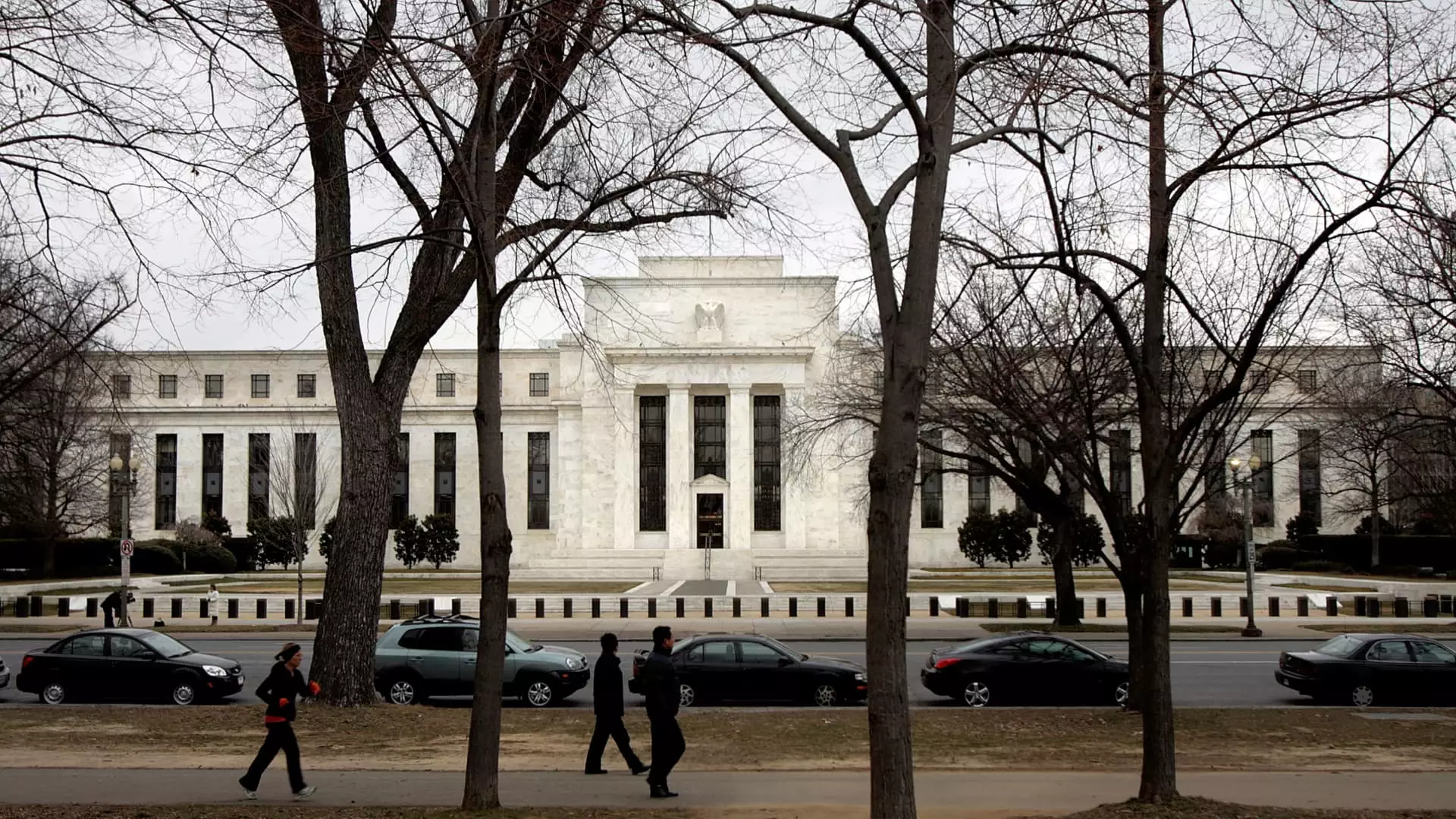The decision of the Federal Reserve (Fed) to maintain interest rates serves as a critical juncture in the financial landscape, especially as concerns over inflation persist. Having initially slash rates last year, the Fed’s choice to hold the current rates reflects a complex interplay between economic pressures and political influence. These dynamics not only impact the financial strategies adopted by consumers but also the broader implications for economic growth and stability.
Since emerging from the pandemic, inflation has become a thorny issue, with costs escalating at rates not seen since the early 1980s. This surge has warranted a series of aggressive rate hikes by the Fed, pushing the benchmark rate to levels not experienced for over two decades. With inflation now hovering above the anticipated 2% threshold, the central bank finds itself in a precarious position. Michele Raneri, a prominent voice at TransUnion, aptly noted that while inflation anxieties have lessened somewhat, they are far from eradicated. Consumers are currently situated in an environment rife with high prices alongside elevated borrowing costs, leaving little room for immediate relief.
The intersection of political pressures also complicates matters. President Donald Trump’s call for lower interest rates adds a layer of complexity, potentially challenging the autonomy of the Fed. Should economic frustrations continue to mount, it unfolds a narrative where the central bank’s decisions could be scrutinized in a politically charged environment.
For many households, the implications of sustained high interest rates are profound. The specter of escalating borrowing costs looms large, as consumers grapple with the realities of maintaining both their standard of living and responsible financial management. Though the Fed’s rate cuts are expected later this year, experts warn that these adjustments will likely not alleviate the burden sufficiently. Greg McBride from Bankrate indicates that the projected cuts are unlikely to provide tangible relief to struggling consumers.
Take credit cards as a prime example: the average interest rate has surged from 16.34% in March 2022 to an alarming 20% today, edging close to historical highs. While the anticipated quarter-point cuts could marginally ease the annual percentage rates (APRs), the reductions are insufficient to bring about meaningful relief. Strategically, financial analysts such as Matt Schulz advocate for personal consolidation strategies, highlighting the potential benefits of utilizing low-interest personal loans or 0% balance transfer credit cards.
Even in the real estate domain, the economic climate is unforgiving. Current rates for a 30-year fixed mortgage hover just above 7%, significantly squashing homebuyers’ purchasing power. While rates may position themselves in the 6% range throughout the year, the nature of fixed mortgages means that existing borrowers are shielded unless they engage with refinancing opportunities. Thus, the tension between market prices for homes, influenced by persistent inflation, and consumer affordability continues to challenge prospective buyers.
Auto loans present a similar predicament. The average rate for a five-year new car loan currently stands at approximately 5.3%. The intricate interplay between elevated rates and skyrocketing vehicle prices renders purchasing decisions increasingly difficult. As noted by industry experts, the average transaction price of a new vehicle rests at around $50,000, compounding affordability difficulties for many consumers. As the Fed indicates that rate cuts will be gradual, the forecast for significantly improved affordability in the automotive market appears bleak.
The student loan sector is another domain feeling the ripple effects of the Fed’s monetary stance. While federal student loan rates are fixed, which moderates the immediate impact of interest rate announcements, prospective students note that rates for new loans are increasing. The upcoming academic year will see rates rise to 6.53%, from 5.50%, reflecting the consequences of the broader economic shifts.
Amid these challenges, there is a silver lining for savers. Historically, yields on online savings accounts have surged, affording consumers attractive returns. As Schulz highlights, this could present an opportune moment for individuals to explore high-yield savings accounts, an advantageous position amid broader financial stress.
In summation, the Federal Reserve’s decision to hold interest rates steady amid sustained inflation presents a complex environment for consumers. With inflation still a pressing concern and various borrowing costs weighing heavily on the average household, navigating this financial landscape requires strategic planning and awareness. As rate cuts loom in the future, a cautious optimism emerges, yet consumers must remain vigilant and adaptable, recognizing the continued challenges ahead in their financial journeys.

